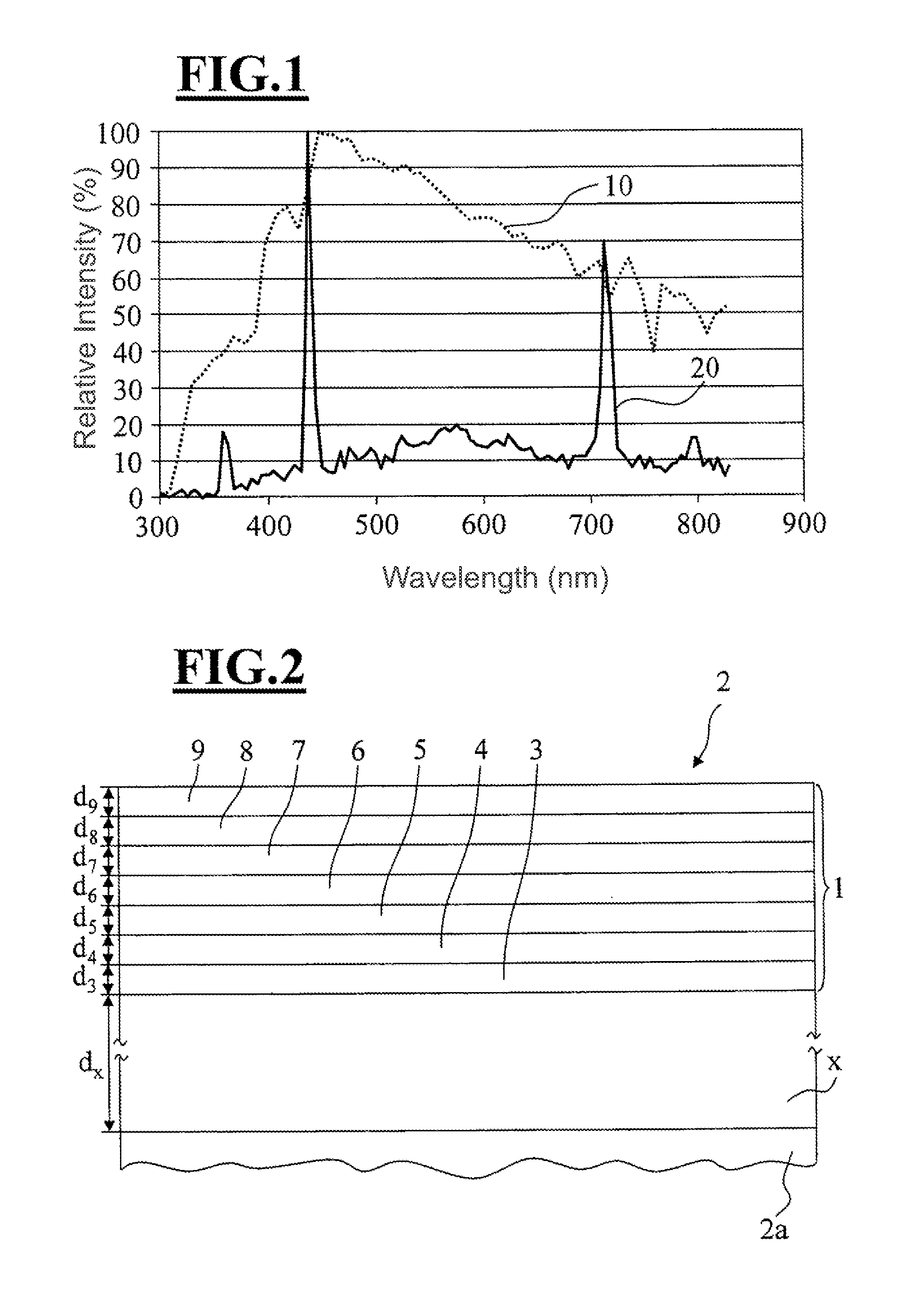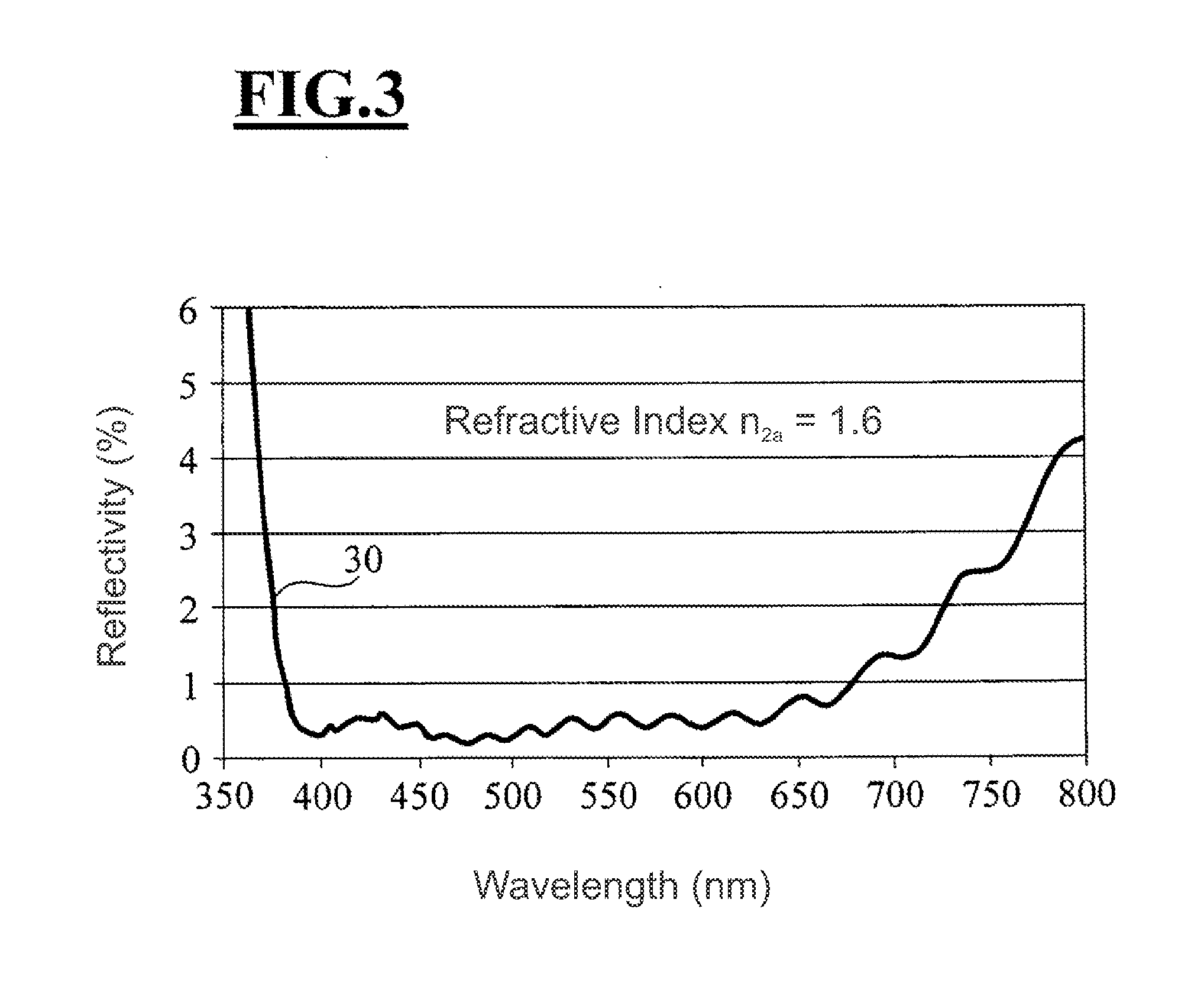Spectacle lens with color-neutral Anti-reflection coating and method of making the same
- Summary
- Abstract
- Description
- Claims
- Application Information
AI Technical Summary
Benefits of technology
Problems solved by technology
Method used
Image
Examples
Embodiment Construction
[0038]FIG. 1 shows the illumination curves of daylight 10 standardized to 100% intensity (here approximated to the D65 standard known to the person of ordinary skill in the art) and a fluorescent tube 20. When simultaneously considering both illuminations (10, 20) during the configuration of the interference layer system, one obtains the spectral reflectance curve 30 of FIG. 3 for the antireflection coating 1 of a spectacle lens 2 shown in FIG. 2 (not to scale).
[0039]The antireflection coating 1 in the shown embodiment includes a scratch-resistant layer (x) and seven individual layers (3, 4, 5, 6, 7, 8, 9) which form the interference optical system.
[0040]The spectacle lens 2a which forms the substrate and has a refractive index n2a of 1.6 is initially provided with a scratch-resistant layer (x). The scratch-resistant layer (x) has a refractive index nx of 1.6 and a thickness dx of 2.5 μm. The system of the antireflection coating 1, which functions as an interference optical layer sy...
PUM
| Property | Measurement | Unit |
|---|---|---|
| Thickness | aaaaa | aaaaa |
| Thickness | aaaaa | aaaaa |
| Surface energy | aaaaa | aaaaa |
Abstract
Description
Claims
Application Information
 Login to View More
Login to View More - R&D
- Intellectual Property
- Life Sciences
- Materials
- Tech Scout
- Unparalleled Data Quality
- Higher Quality Content
- 60% Fewer Hallucinations
Browse by: Latest US Patents, China's latest patents, Technical Efficacy Thesaurus, Application Domain, Technology Topic, Popular Technical Reports.
© 2025 PatSnap. All rights reserved.Legal|Privacy policy|Modern Slavery Act Transparency Statement|Sitemap|About US| Contact US: help@patsnap.com



